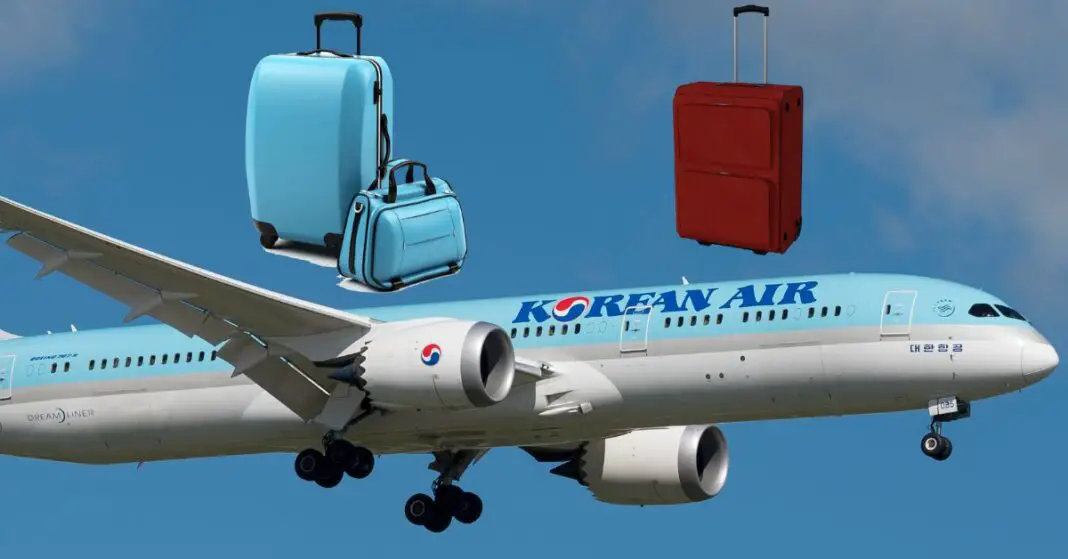As the largest airline and flag carrier in South Korea, Korean Air offers a comprehensive set of rules and allowances governing the bags you may bring aboard to ensure safety, convenience, and efficiency for all passengers. Knowing these standards ahead of your flight can greatly enhance your travel experience.
Understanding the ins and outs of Korean Air’s baggage allowances can help avoid unnecessary hassle at the airport and extra costs that may arise from oversized or overweighed bags.
This blog will cover the allowances provided for both carry-on and checked baggage and provide strategic tips to enable you to maximize your baggage allowance on this prestigious airline.
Table of Contents
The Korean Air Carry-on Baggage Allowance
Knowing the intricacies of Korean Air’s carry-on baggage allowance is crucial for all smart travelers; isn’t it the mark of a savvy business person to work within established parameters to maximize efficiency and minimize inconvenience? For that reason, let’s get right into the brass tacks.
The key takeaway is that Korean Air allows the passenger to carry one bag and one personal item on their flights. Size and weight restrictions are an essential component of this allowance.
For your carry-on bag, the maximum dimensions allowed are 115 cm (or 45 inches) including wheels and handles, and the weight limit is set at 12 kg (or 26 lbs). Submitting these measurements isn’t an oppressive constraint; rather, they are avenues for smart planning and packing.
Your personal item, on the other hand, can be anything from a laptop or purse to reading material or a camera. As you embark on your journey, consider these bag guidelines as your ticket to a smooth and hassle-free ride.
Embrace these rules; they are spaces for strategic innovation, not hindrances. Plan wisely and you’re halfway to your destination. Now, go forth and fly high! Travel responsibly and remember, understanding the rules is the first rule of successful travel.
Checked Baggage Allowance on Korean Air
Expanding on essential travel tips, the details surrounding Korean Air’s checked baggage allowance unquestionably merit discussion. The cabin environment only allows for limited personal items, but the cargo hold of each plane offers a more capacious area for larger, heftier luggage. In navigating Korean Air’s checked baggage policy, it’s vital to know that it pivots on two vital factors: your ticket’s class of service, and your loyalty club status.
Economy class passengers on most routes can check two bags of 23 kilograms each without incurring additional fees, adhering to the standard dimensions of 158 centimeters when adding length+width+height. Astute travelers in Prestige class have an even more generous allowance, permitted to check in two bags each weighing up to 32 kilograms.
But seasoned, savvy travelers—those with Morning Calm & SKYPASS Elite Plus status—are at an advantage with an additional baggage slot on all flights.
Strategies to Maximize Korean Air Baggage Allowance
Beyond the carry-on allowances, a critical aspect to study in-depth is Korean Air’s checked baggage policy, which has specific stipulations based on the ticket class of service. For instance, the guidelines for Economy Class passengers are inherently different from those for the Prestige Class. Understanding these variable factors is key to making strategic moves in packing and buying new items during your travel.
Economy Class passengers are typically permitted two pieces of checked baggage, each adhering to fixed dimensions and weight restrictions. Now, those flying Prestige Class, enjoy the luxury of added allowances; up to three pieces of checked baggage can be taken on board, all conforming to a somewhat more generous weight limit. This difference underlines the need to tailor packing and purchasing habits to align with your specific baggage allowance.
Ensuring full comprehension of these policies helps avoid any unexpected expenses or other inconveniences that could potentially disrupt your trip. Furthermore, as a frequent flyer and a privileged member of Morning Calm or SKYPASS Elite Plus, the allowances go further with an additional baggage slot offered as part of the loyalty reward program.
Assessing your travel habits and aligning them with specific travel policies like these not only optimizes your baggage allowance but can also bring unforeseen value addition to personal travel skills. So no matter your travel style, a thorough understanding of Korean Air’s baggage allowances and how to use them to your advantage can set you up for a smoother and more efficient journey.
Ultimately, understanding and tactically navigating Korean Air’s baggage policies can help to streamline your travel preparation, enhance your flight experience, and potentially save you money. By adhering to the size and weight limits, keeping up-to-date with prohibited items, and maximizing your packing efficiency, you stand to benefit significantly.
Furthermore, leveraging benefits from frequent flyer status or credit card affiliations can contribute to making your travel seamless and stress-free. Safe travels, and may your journey with Korean Air be as pleasant and smooth as possible.
How much baggage is allowed on Korean Air?
The baggage allowance with Korean Air varies based on factors such as your travel class, destination, and specific situations. Typically, in Economy, you’re allowed one checked bag weighing up to 23 kg and a carry-on. In the Prestige class, you can have two checked bags, each weighing up to 32 kg, along with a carry-on. For First class, the allowance is three checked bags, each weighing up to 32 kg, along with a carry-on.
Different rules or fees may apply to infants, children, sporting equipment, and musical instruments. For detailed and flight-specific information, please refer to Korean Air’s website.
Is Korean Air strict with luggage weight?
While there are occasional reports suggesting leniency, Korean Air typically adheres rigorously to luggage weight limits. The use of automated scales, substantial excess fees, and safety considerations all contribute to the airline’s strict enforcement.
Nevertheless, factors such as destination regulations, peak seasons, and the discretion of individual staff members may occasionally impact the level of strictness. To prevent airport inconveniences, it is advisable to pack within the specified weight limits, utilize a home scale, and consult Korean Air’s website for comprehensive baggage policies before your flight.





